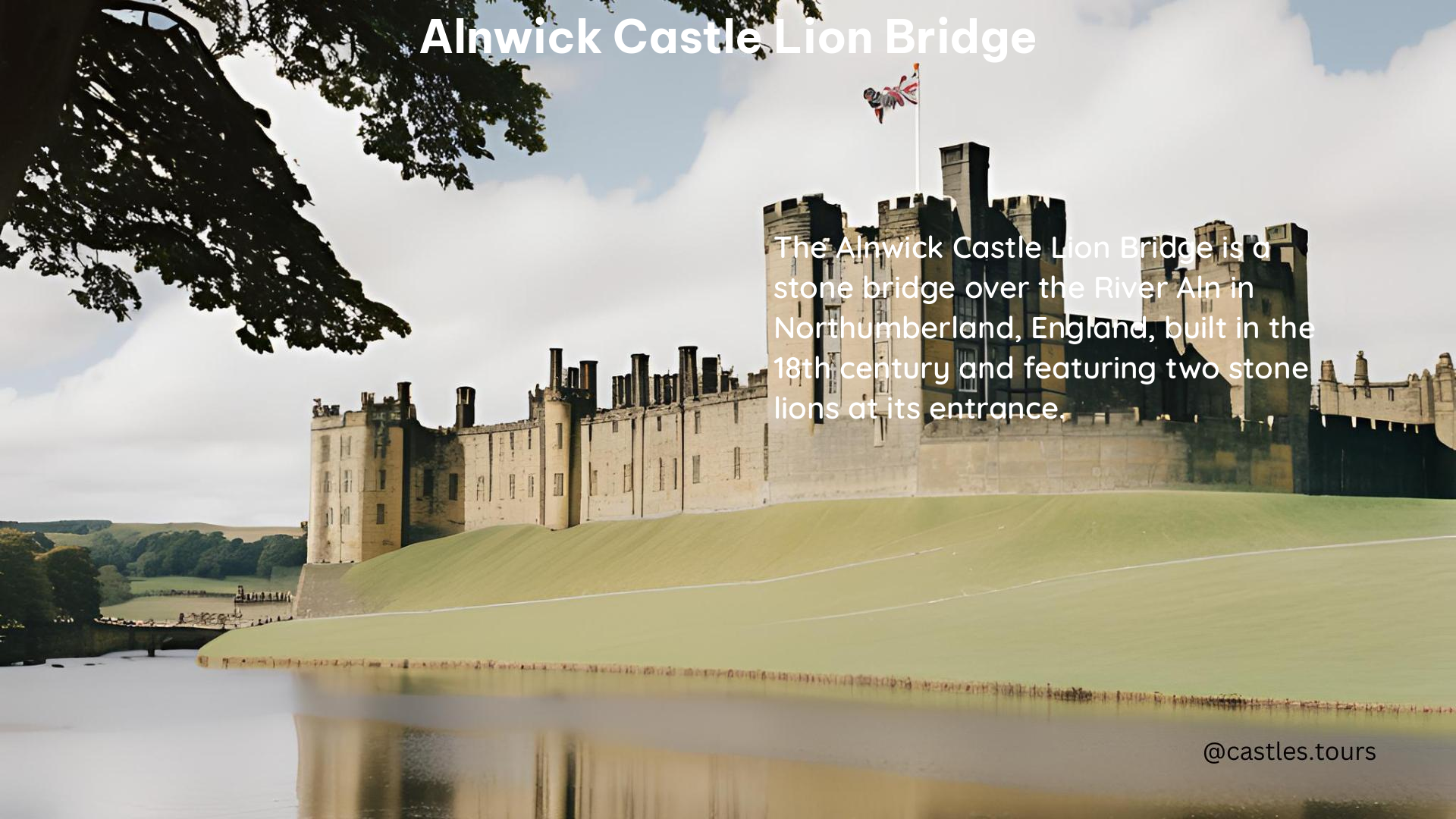The Alnwick Castle Lion Bridge is a stunning 18th-century Gothic-style bridge located in Alnwick, Northumberland, England. This architectural marvel, designed by the renowned Scottish architect John Adam, has stood the test of time, captivating visitors with its intricate details and rich history.
Construction and Design of the Alnwick Castle Lion Bridge
The Alnwick Castle Lion Bridge was constructed in 1775, replacing an earlier medieval bridge that had been destroyed by a flood in 1770. The bridge’s design is characteristic of the 18th-century Gothic ‘castle style’ associated with Robert Adam’s architectural style. It features four arches, with the central arch being larger than the outer ones, creating a visually striking and symmetrical appearance.
The Iconic Percy Lion

The bridge’s most distinctive feature is the sculpture of the Percy Lion, which is situated on the east side of the structure. This lead cast sculpture, created in 1773 by John Knowles, is a unique and iconic element of the bridge. The Percy Lion is distinguished by its straight tail, a distinctive characteristic that sets it apart from other lion sculptures.
Architectural Details and Features
The Alnwick Castle Lion Bridge is a true masterpiece of craftsmanship, with numerous architectural details that enhance its visual appeal. The bridge’s balustrades are carved in stone to resemble sharpened stakes of a wooden palisade, a deliberate design choice to reinforce the Castle Style theme. The structure is built of squared sandstone blocks with ashlar dressing, and its castellated parapets with molded pedestals add to the overall Gothic aesthetic.
Restoration and Preservation
The Alnwick Castle Lion Bridge has endured the test of time, with various restoration efforts undertaken to preserve its historical and architectural significance. In 1994, the Percy Lion was knocked into the river by a fairground wagon and had to be restored. Additionally, the bridge was closed for repairs after floods in 2008, with preventive measures taken to protect the structure from future flood damage.
Significance and Listing
The Alnwick Castle Lion Bridge is a highly significant architectural landmark, recognized for its historical and cultural importance. It is a Grade 1 listed structure, indicating its exceptional architectural and historical value. The bridge has been featured in various works of art, including Joseph Mallord William Turner’s painting “Alnwick Castle, with the Lion Bridge” in 1797, and has been mentioned in literary works such as Oliver Wendell Holmes’ “The Autocrat of the Breakfast-Table.”
Conclusion
The Alnwick Castle Lion Bridge is a true gem of architectural heritage, a testament to the skill and vision of its designers. Its captivating Gothic-style design, the iconic Percy Lion sculpture, and its rich history make it a must-visit destination for castle enthusiasts and architectural aficionados alike. As a Grade 1 listed structure, the Alnwick Castle Lion Bridge continues to captivate and inspire visitors, preserving the legacy of its past and standing as a symbol of Northumberland’s enduring architectural legacy.
